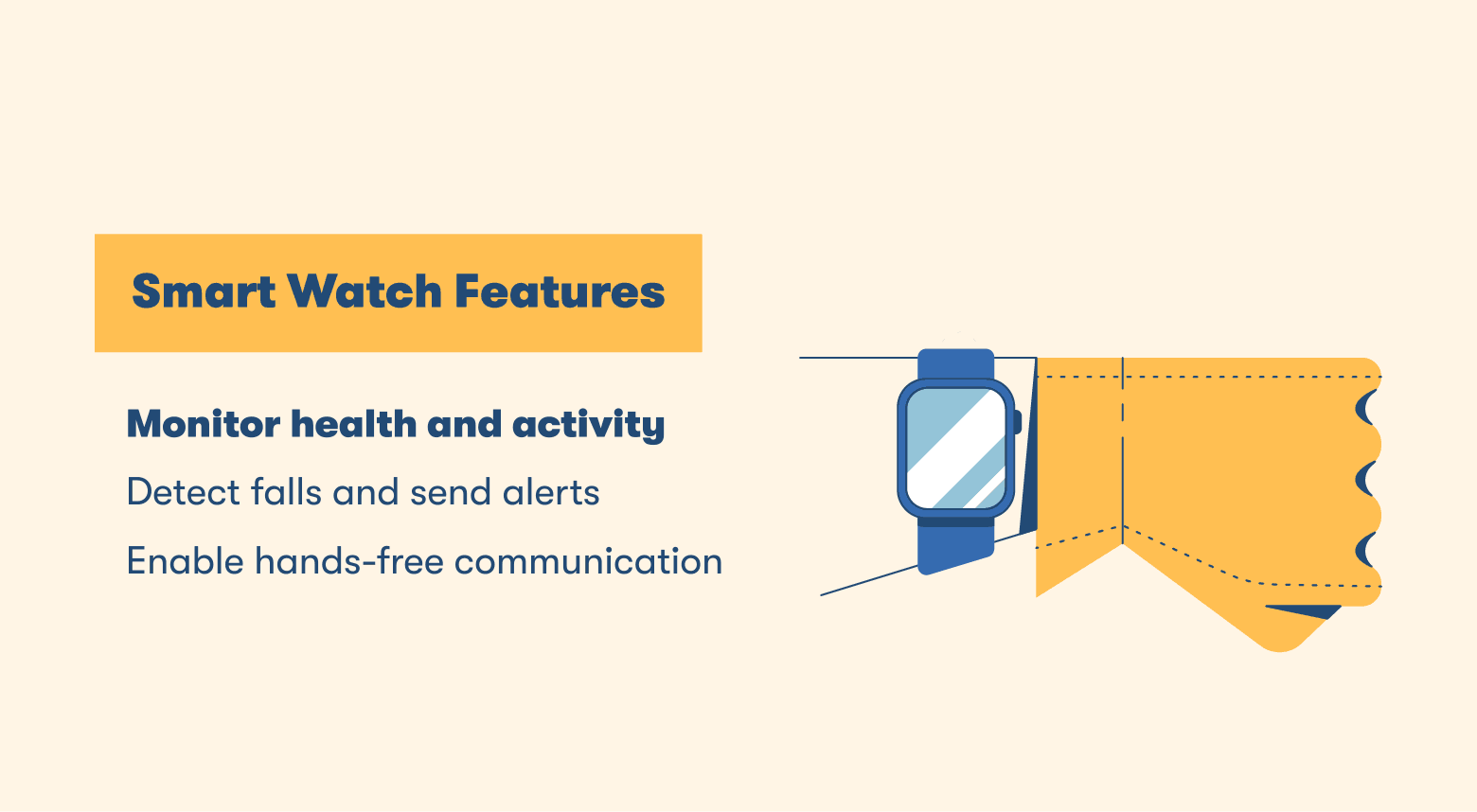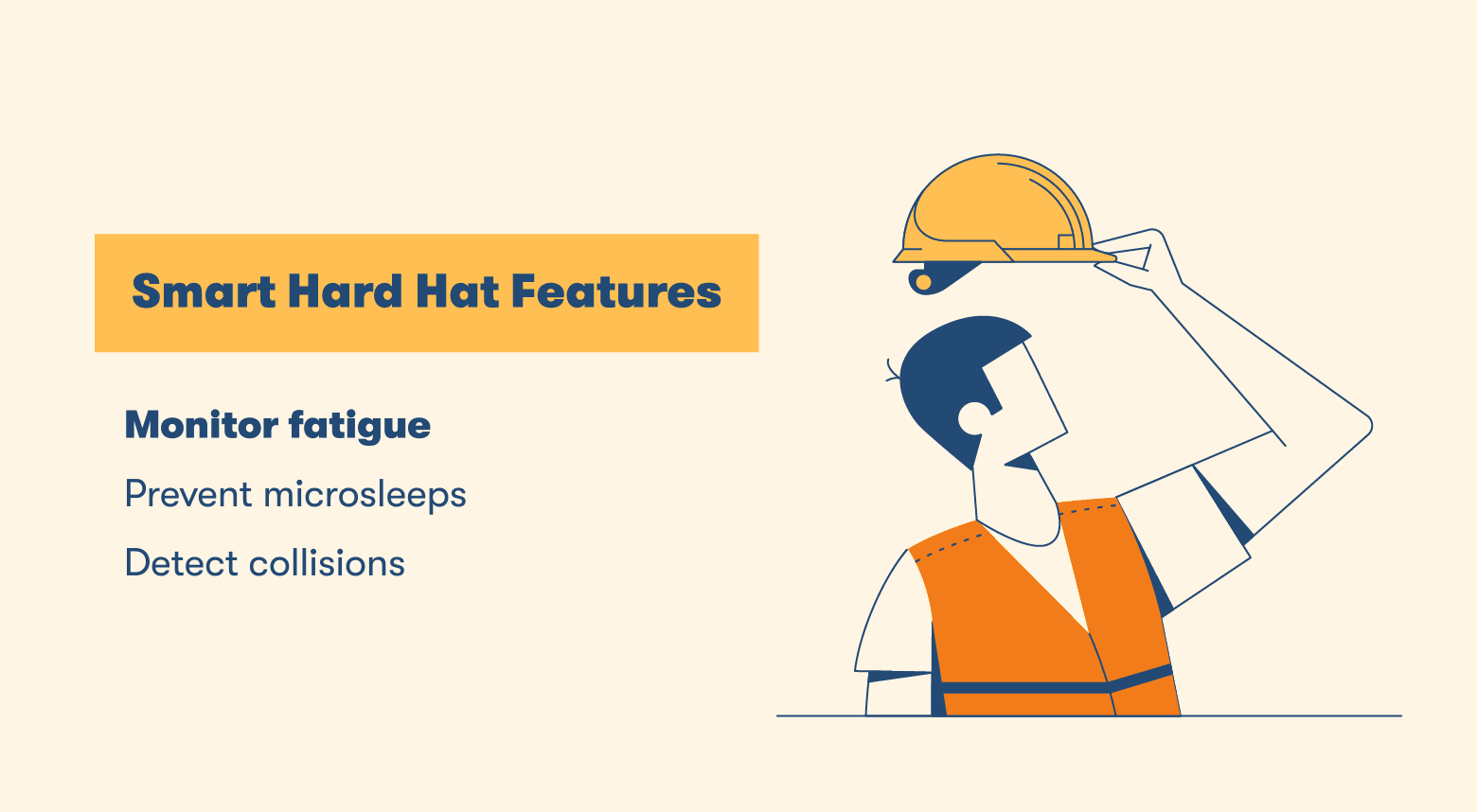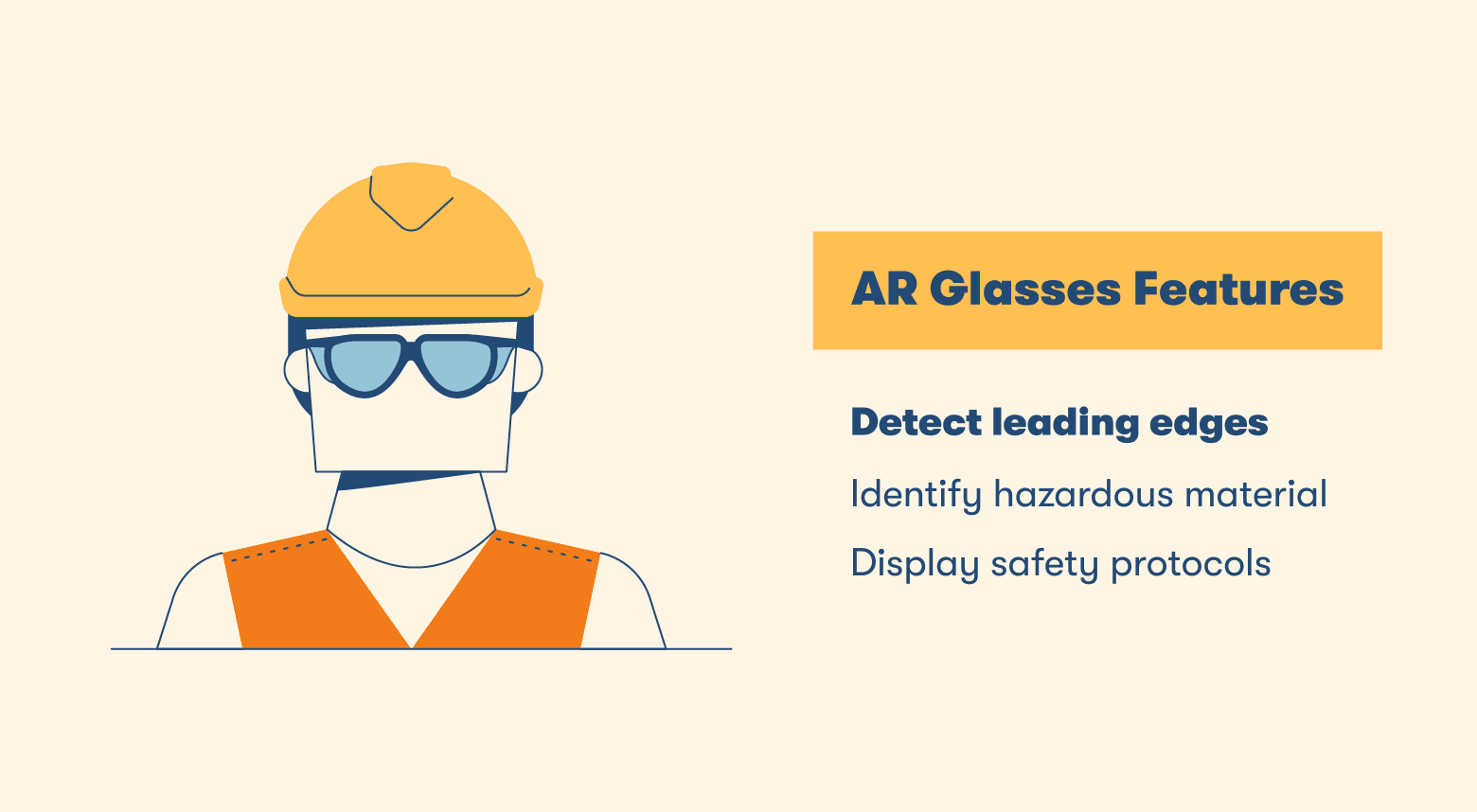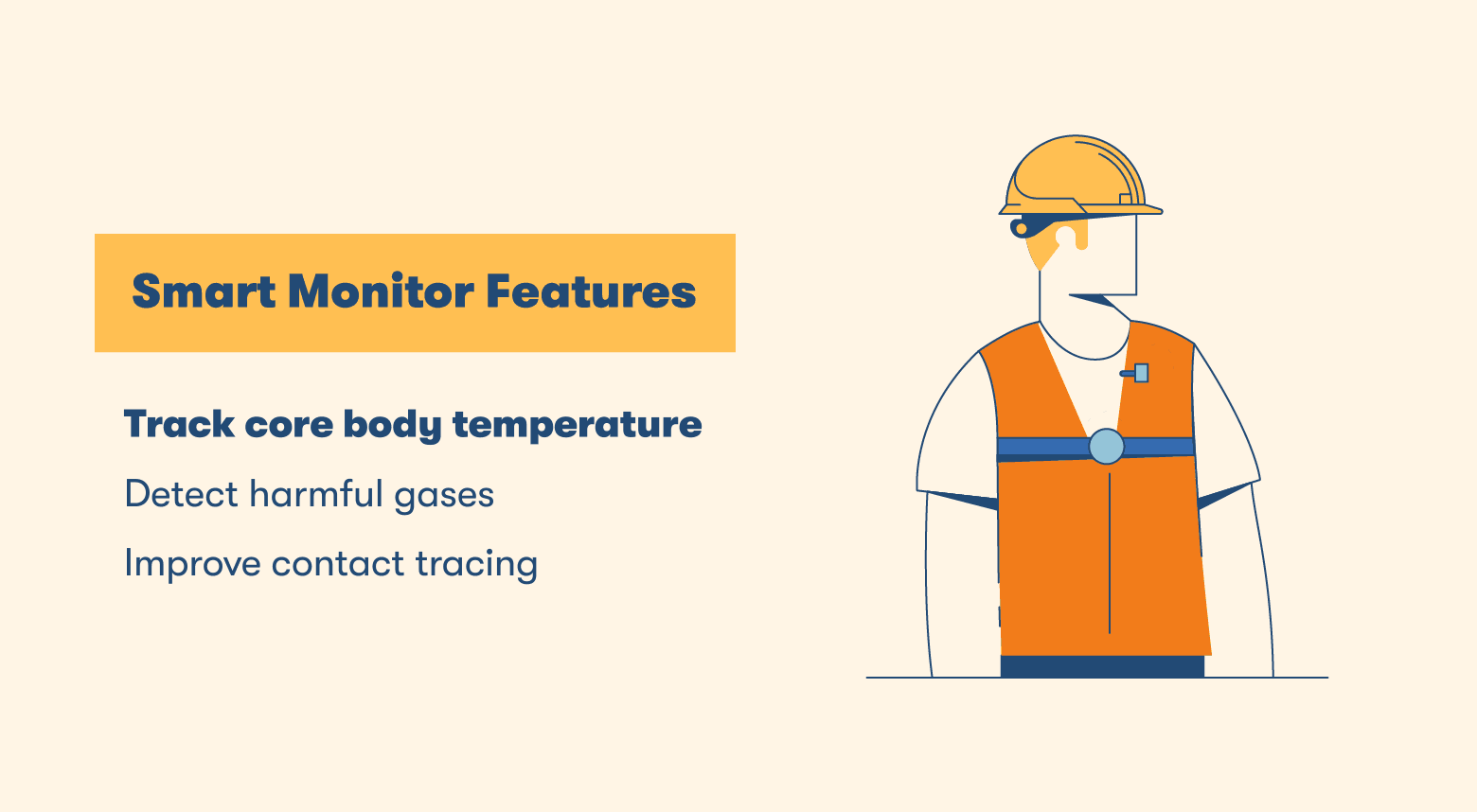Safety is a prime concern on any construction site, and the construction industry continues to seek ways to reduce fatalities among workers. Construction workers account for nearly half of all fatal work injuries in the United States, and they also sustain tens of thousands of non-fatal injuries every year. While construction injuries have been decreasing since the late 1990s due to OSHA regulations, more can be done to protect workers in this vital field.
Wearable construction technology, which includes any device that construction workers wear on their bodies, may prove to be a key resource in the quest to eliminate construction worker fatalities and injuries. A U.S. Chamber of Commerce report notes that only 6 percent of contractors used construction wearables onsite in 2018, but it’s expected that 23 percent will be using such technology by 2021. That same report mentions an impressive fact: 83 percent of contractors believe that construction wearables would improve on-site safety.
The future of safe construction involves user-friendly and powerful wearable technology, including smart watches, boots, helmets, glasses and body wear. Each of these technologies provide different tools in an arsenal designed to keep workers safe, healthy and productive.
See our infographic below for an overview of the features construction wearables have.
Smart Watches: A Safety Companion on the Wrist

Many people now wear a smart watch daily, but the powerful sensors in products like the Apple Watch have special significance in the construction industry. These devices are capable of monitoring activity data, detecting falls and enabling safe communication.
- Health and Activity Data: Contractors and workers can monitor vital signs like heart rate and step counts to prevent overexertion, and some products are even capable of recording an electrocardiogram to detect abnormal heart rhythms or blood oxygen saturation to spot respiratory distress.
- Detecting Falls: Falls are a leading cause of injury and death on construction sites, and new wrist wearables are capable of detecting falls and immediately alerting site and emergency personnel, speeding up response times when accidents do happen.
- Safe Communication: Construction workers need their hands free, especially when operating equipment, and smart watches enable them to communicate without needing to use their hands at all.
In addition to these benefits, construction wearables may soon also help monitor the mental health of construction workers, which is a growing concern in recent years. Products like the Moodbeam One promise to help workers keep track of their mood throughout the day and spot trends in their mental health.
Boot Up: Powered Footwear With Added Benefits

Soon construction workers will see their boots — already an essential piece of safety equipment — transform into a powerful piece of wearable technology, capable of detecting pressure and location, all without needing to be regularly charged.
- Pressure Detection: With sensors equipped in the sole, smart boots can detect falls or small shocks sustained by construction workers and call for help automatically.
- Location Sensing: Many construction wearables are location aware, and smart boots are no exception. Using technology more sensitive than GPS, smart boots can track the location of a worker accurately, which improves lone worker safety and helps to reduce time spent in unsafe areas.
- Built-In Charging: With charging technology located in the heel, smart boots can be charged simply by walking, increasing the chances that the boots will stay charged throughout an entire shift on site.
Products like the SmartBoots by SolePower are aiming to revolutionize construction footwear in the coming years.
Helmet of the Future: Protecting More Than Just the Head

Hard hats are a vital piece of safety equipment on every construction site, but new features will make them even more indispensable. By adding a sensor band around the inside rim of a hard hat, technology companies aim to create a construction wearable capable of detecting fatigue, preventing microsleep, and sensing proximity.
- Fatigue Detection: By measuring vital signs, smart helmets are able to detect worker fatigue and signal the need for a break.
- Microsleep Prevention: With powerful technology that evaluates brainwaves, a sensor band that sits on the inside of a hard hat can detect microsleeps before they occur. Microsleeps, which are sudden moments of sleep that occur in fatigued individuals, are especially dangerous for construction workers.
- Proximity Sensing: With sensors in heavy equipment and hard hats, construction wearables can help alert contractors, workers and equipment operators to potential collisions, helping to prevent accidents.
New technology included in products like the SmartCap and WakeCap will add these features to construction helmets on more construction sites in the coming years.
Augmented Reality Glasses: Virtual Information on the Physical World

Safety glasses play an important role in protecting construction workers, but smart glasses provide additional layers of information to workers. This technology, known as augmented reality, combines physical surroundings and computer-generated imagery and presents both together in real time. In the case of smart glasses, this enables workers to wear goggles that not only keep their eyes safe, but also show them vital information about leading edges, hazardous materials and safety protocols.
- Leading Edges: Since falls are a major cause of injury and death in construction, awareness of risky leading edges is critical to improving safety standards. Smart glasses can provide real-time information about the location of leading edges to workers as they move around the construction site.
- Hazardous Materials: Using machine learning, smart glasses may soon be able to detect hazardous materials and provide immediate visual alerts to construction workers.
- Safety Protocols: With smart glasses, it’s possible to provide visual cues for important safety protocols directly on the environment a worker is in. For example, a worker on scaffolding could be given direct information about where to clip in a safety harness.
In addition to its safety benefits, augmented reality also has impressive uses for project planning, team collaboration and site modifications.
Body Wear: Added Features in Familiar Forms

Construction work involves quite a bit of gear, and construction wearables exist for other parts of the body besides the wrist, feet and head. These wearable devices increase safety in a variety of ways, like heat tracking, gas detection and reduced muscle fatigue.
- Heat Tracking: Sensors that can be worn around the bicep or chest can detect core body temperature and alert contractors and workers when a break in the shade or a drink of water is needed.
- Gas Detection: Small devices that clip on to the upper arm or chest detect a variety of dangerous gases, preventing unnecessary exposure and potentially saving lives.
- Reduced Muscle Fatigue: Special technology known as “exoskeletons” can improve strength and reduce muscle fatigue in a variety of situations like heavy lifting or gripping tools.
With construction wearables like the Kenzen heat monitoring system or Blackline Safety’s G7 personal monitor, all of these features will soon be made available to construction workers.
Construction Wearables: The Same Equipment, But Better
As construction wearable technology continues to emerge, it is striking to see the improvements that are being made to standard safety equipment. Rather than adding more gear to the already hefty load that construction workers carry daily, technology companies are adding novel and exciting features to equipment that workers would be wearing anyway.
Soon, equipment like hard hats, work boots and safety goggles will be replaced with smart versions that improve worker safety, health and productivity. We look forward to the future when construction sites will use wearable technology to reduce or eliminate worker injuries.
